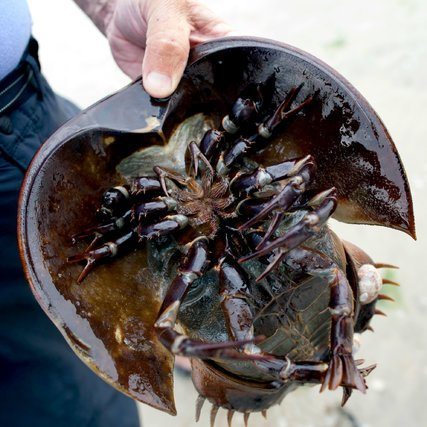Horseshoe crabs possess five pairs of book gills located just behind their appendages that allow them to breathe underwater and also allow them to breathe on land for short periods of time, provided the lungs remain moist.
The outer shell of Horseshoe crabs consists of three parts. The carapace is the smooth frontmost part of the crab which contains the eyes, the walking legs, the chelicera (pincers), the mouth, the brain and the heart. The abdomen is the middle portion where the gills are attached as well as the genital operculum. The last section is the ‘telson’ (caudal spine) which is used to flip itself over if stuck upside down.

Horseshoe crabs can live for 20 – 25 years. Horseshoe crabs migrate into the shore in late spring, with the males arriving first. The females then arrive and make nests at a depth of 15 – 20 centimetres in the sand. Females deposit eggs into the nests which are subsequently fertilized by the male. Egg quantity is dependent on female body size and ranges from 15,000 – 64,000 eggs per female.















